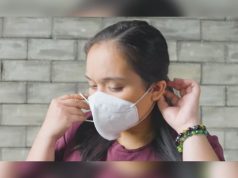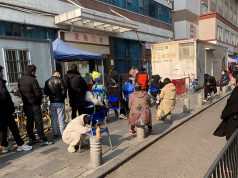
The following is a roundup of some of the latest scientific studies on the novel coronavirus and efforts to find treatments and vaccines for COVID-19.
COVID-19 vaccines may protect patients’ lungs
In vaccinated patients with “breakthrough” COVID-19 infections, the disease may not affect the lungs as much as in unvaccinated patients, new data from India suggest.
Doctors there studied 205 adults with confirmed COVID-19, more than half under age 50. Among those studied, 14% were fully vaccinated, 15% were partially vaccinated, and the rest were unvaccinated. All had computed tomography (CT) scans of their lungs.
Researchers scored each of the five lobes of each lung on a scale ranging from 0 for no virus involvement of the lobe, to 5, which meant more than 75% of the lobe was affected.
Out of a possible 25, the average lung CT severity score was 0 in fully vaccinated patients, 4 in partially vaccinated patients, and 11 in the unvaccinated group, according to a report posted on medRxiv on Tuesday ahead of peer review.
Study co-author Dr. Jaimin Trivedi of the University of Louisville in Kentucky said the findings underscore “the fact that vaccination reduces the severity of the COVID-19 disease even though it may not prevent the infection in some patients.”
Depression among adolescents, young adults up during pandemic
The number of U.S. adolescents and young adults who screened positive for depression and suicide risk increased during the COVID-19 pandemic, a new study suggests.
Researchers examined electronic health records from 68,699 people ages 12 to 21, who received primary care at the Children’s Hospital of Philadelphia.
The proportion of youth screening positive for depressive symptoms increased from 5% between June and December 2019 to 6.2% in the same months during 2020. The proportion who screened positive for suicide risk climbed from 6.1% to 7.1% over this same period.
“School closures and disruptions of routines, social isolation, concerns about family members’ health, financial stresses, political turmoil and high-profile examples of racial injustice may all have played a role,” said co-author Stephanie Mayne of the University of Pennsylvania.
The study results may underestimate the problem, her team noted in a report on Wednesday in Pediatrics, because youth with the most severe mental health symptoms might not have sought treatment in primary care.
“As children head back to school, some for the first time in a while, it is important that we support our schools, teachers, and guidance counselors as they work to help our students learn and deal with what has been an exceptionally challenging 18 months,” said Dr. Stephen Patrick of Vanderbilt University, who was not involved in the study.
Piece of tape improves mask-wearing adherence
Applying a piece of tape to a mask on the bridge of the nose is a simple, low-cost way to ensure people wear it correctly, staffers in an Indianapolis emergency department (ED) have found.
In the ED at Eskenazi Hospital, where everyone was required to wear a mask, researchers recruited 123 patients who were not seriously ill and randomly assigned them either to wear their mask as usual, or to have the mask fastened to the bridge of the nose with a piece of surgical tape.
Patients could either wear their own mask, or a mask provided by the hospital. One hour later, all patients in the tape group were still wearing their masks correctly.
In the control group, 31% of patients had either removed their masks or were wearing them with their nose or nose and mouth exposed, the researchers reported on Monday in Annals of Emergency Medicine.
“Adhesive tape improves patient adherence with universal mask use,” they concluded. This “inexpensive, simple, low-risk intervention … can be applied to any patient mask by any member of the healthcare team to help reduce the unnecessary spread of the virus.”
— Reporting by Nancy Lapid and Lisa Rapaport; Editing by Bill Berkrot









